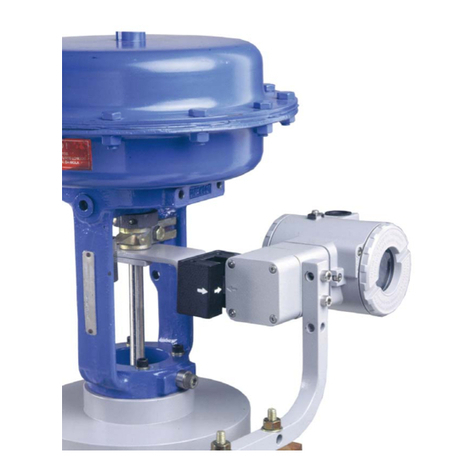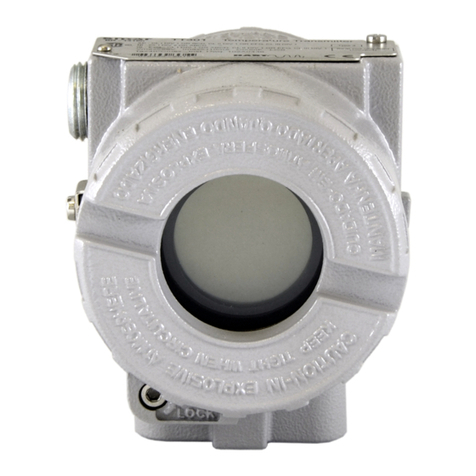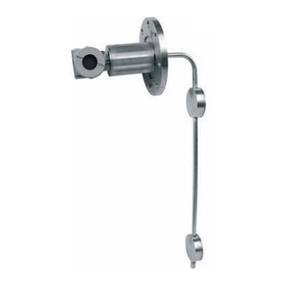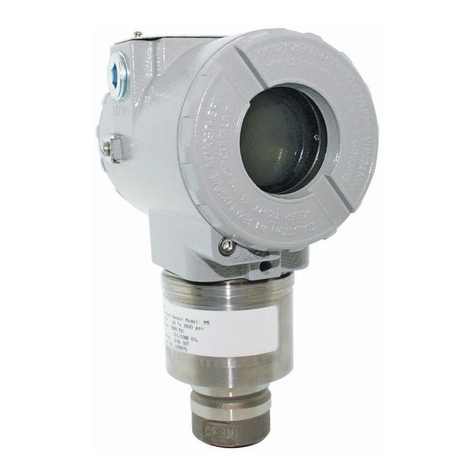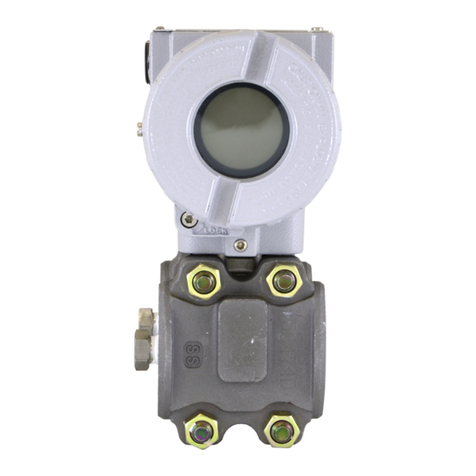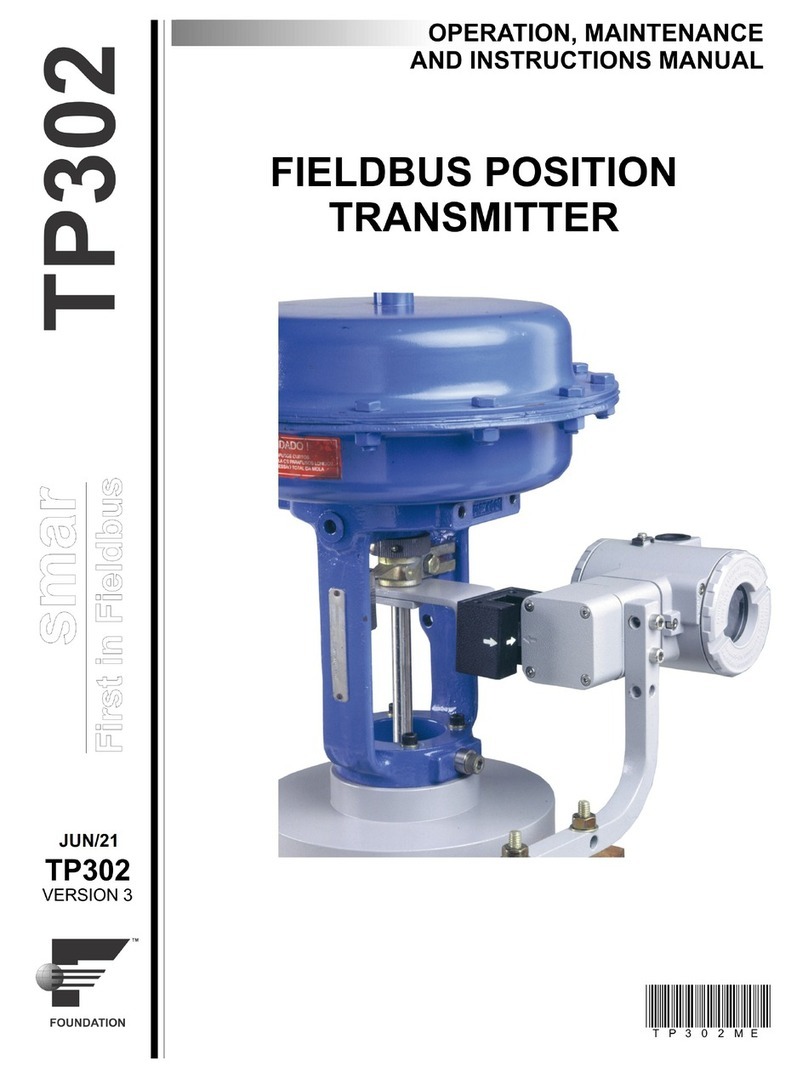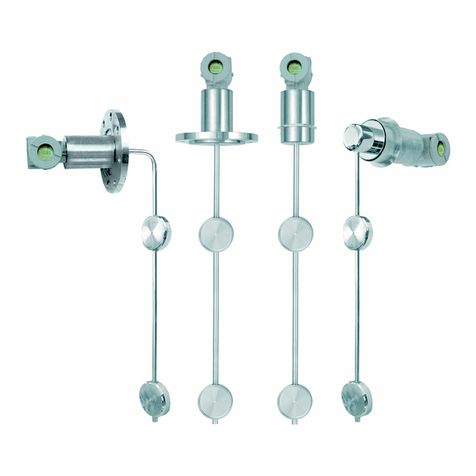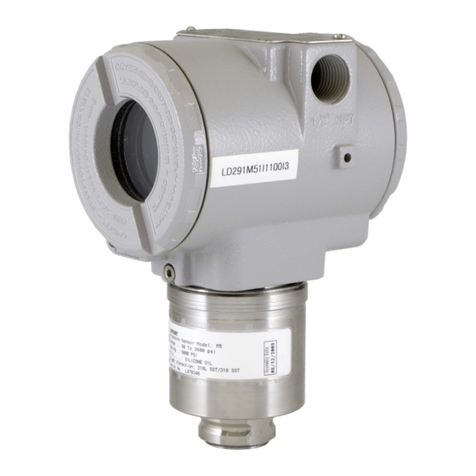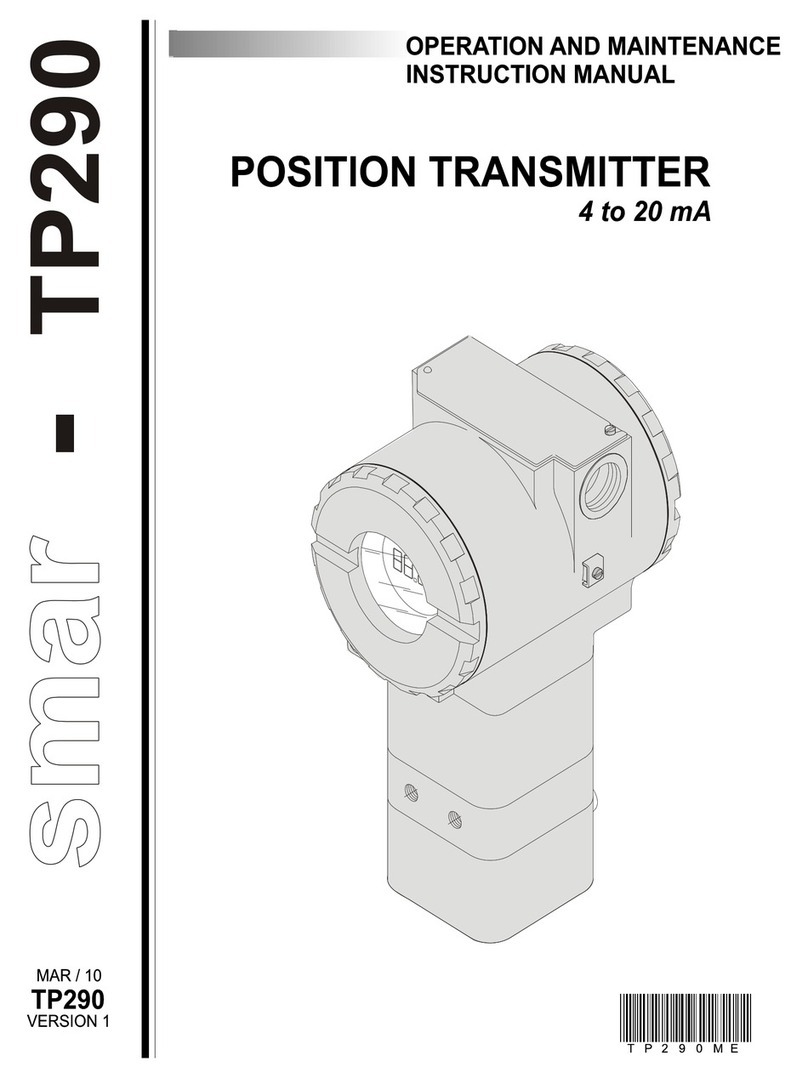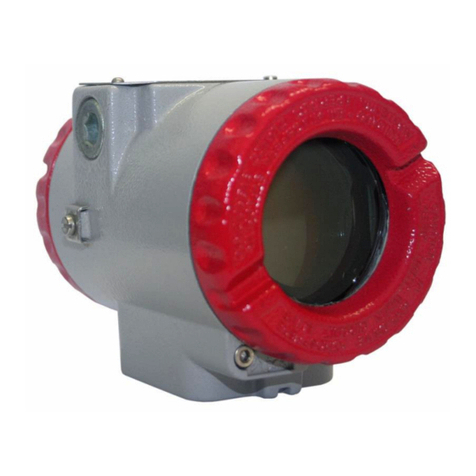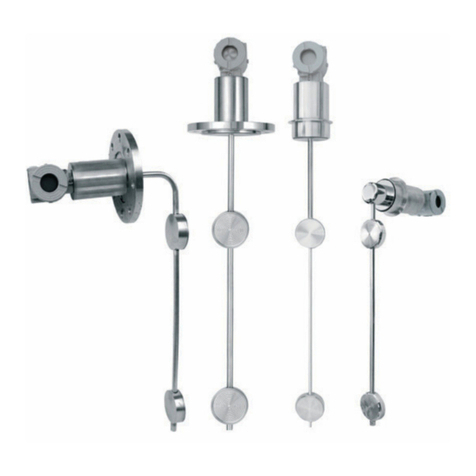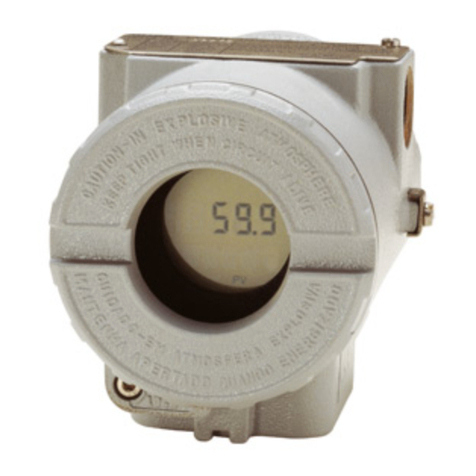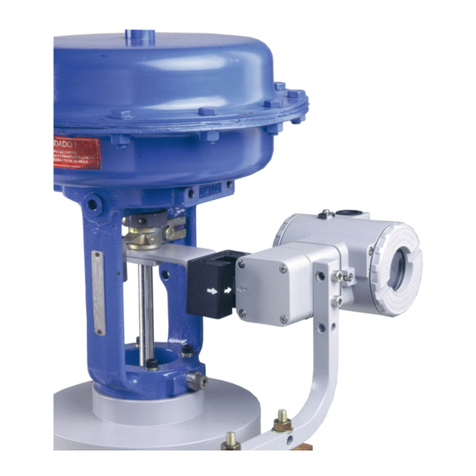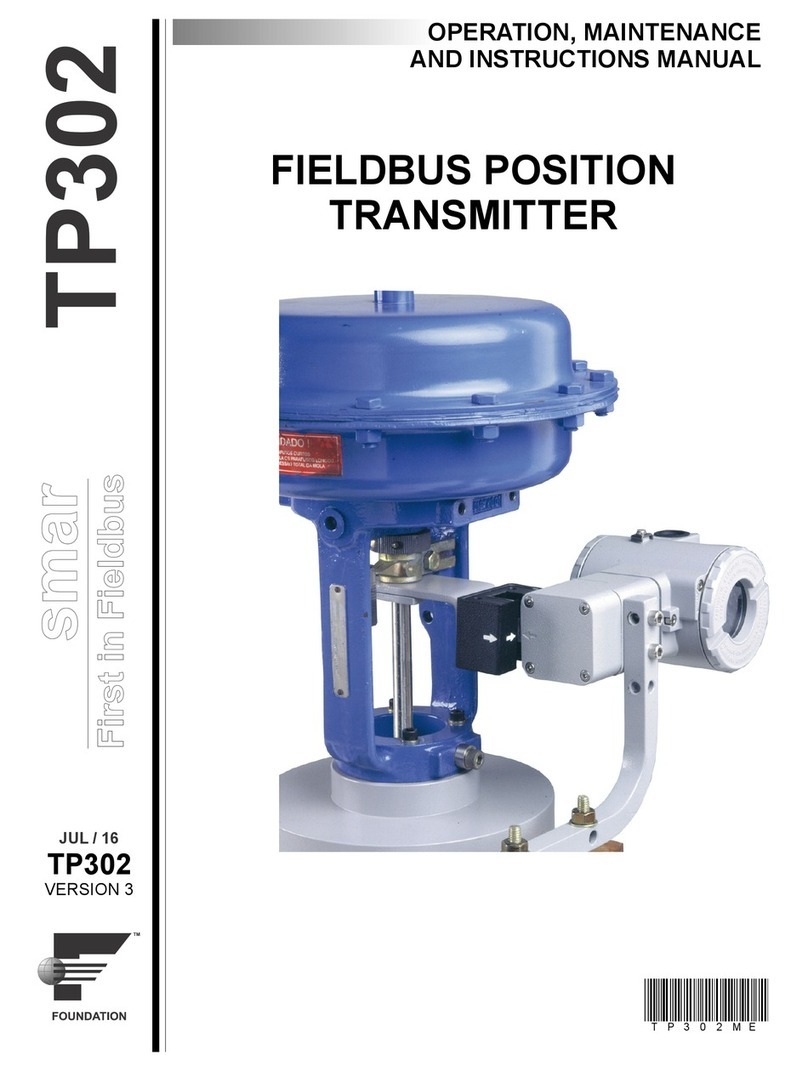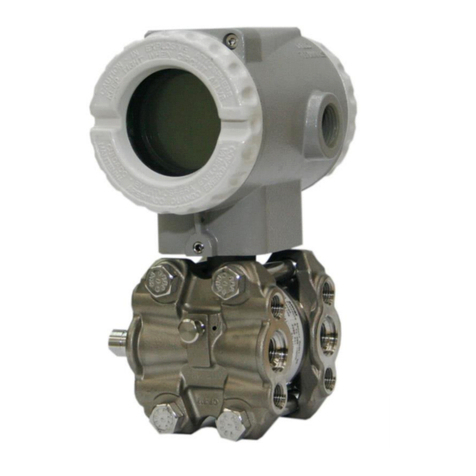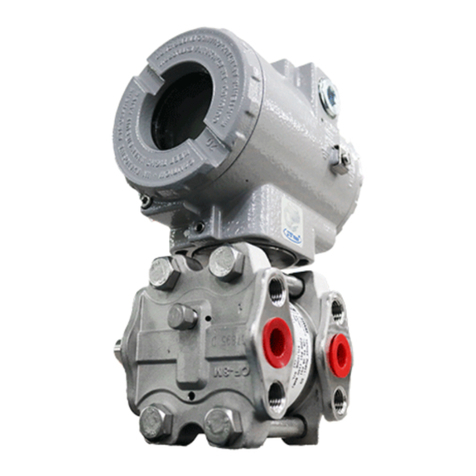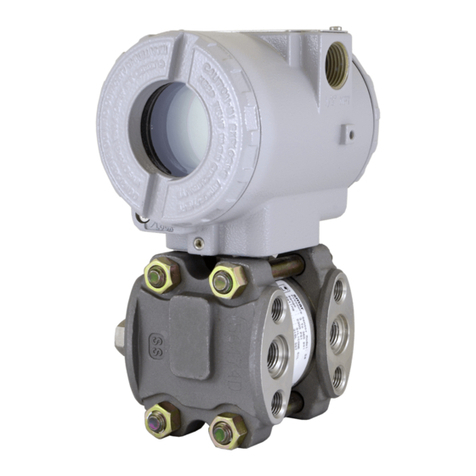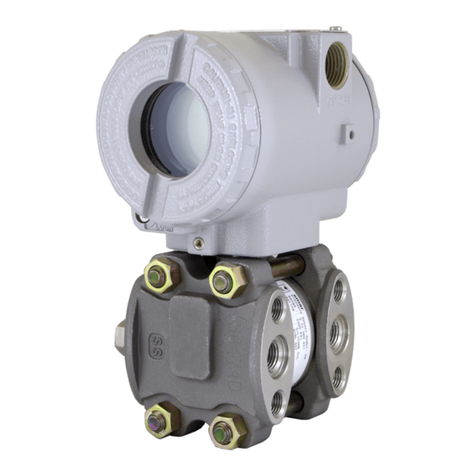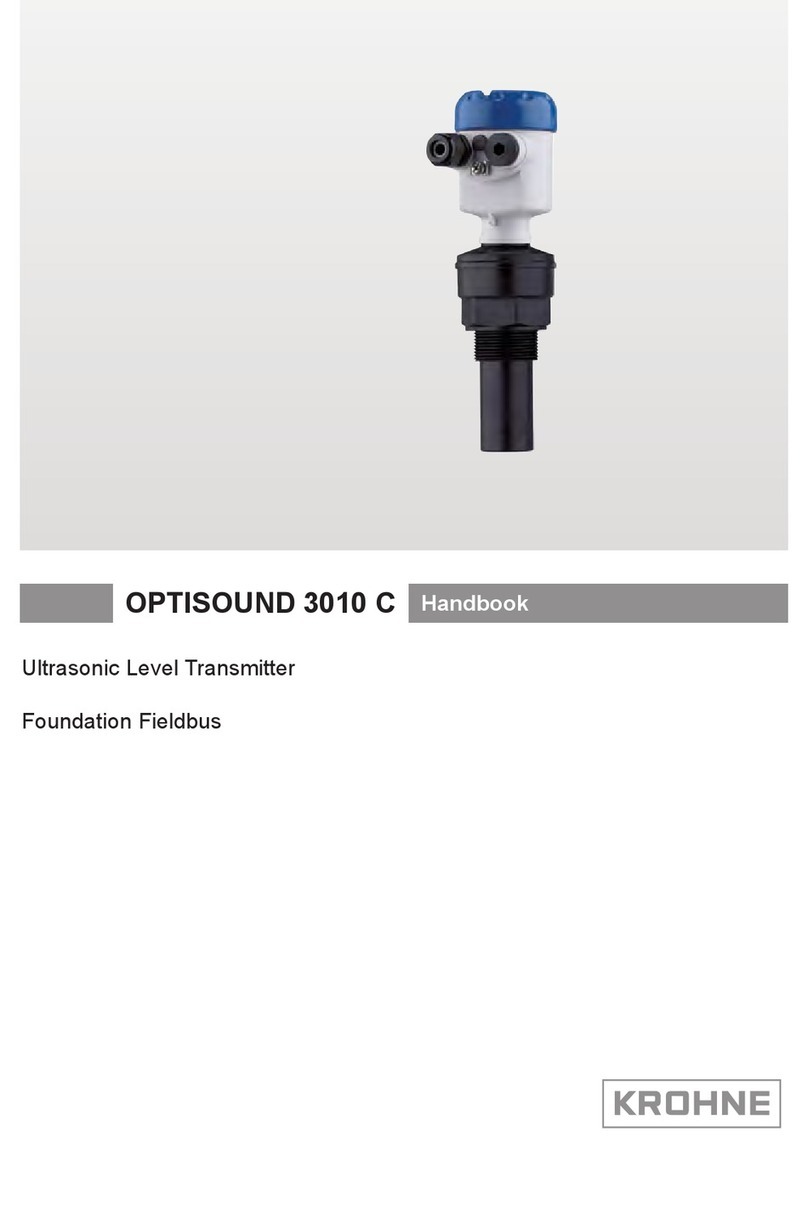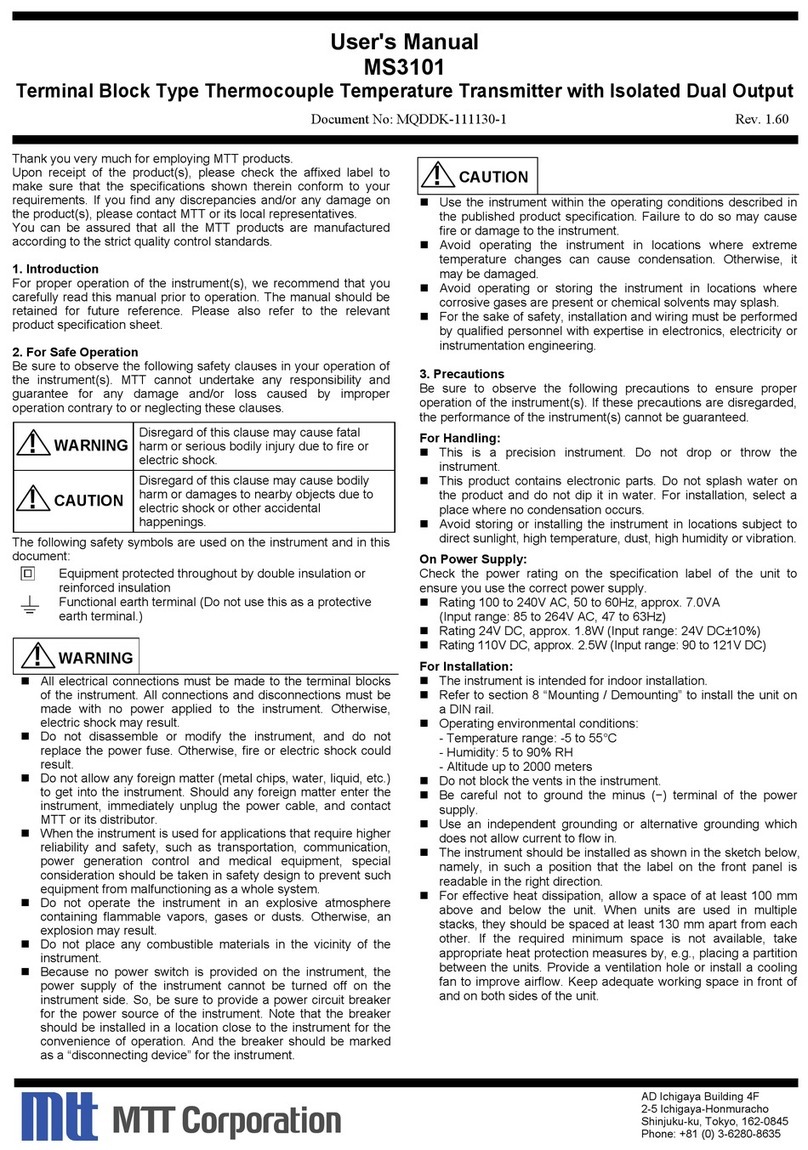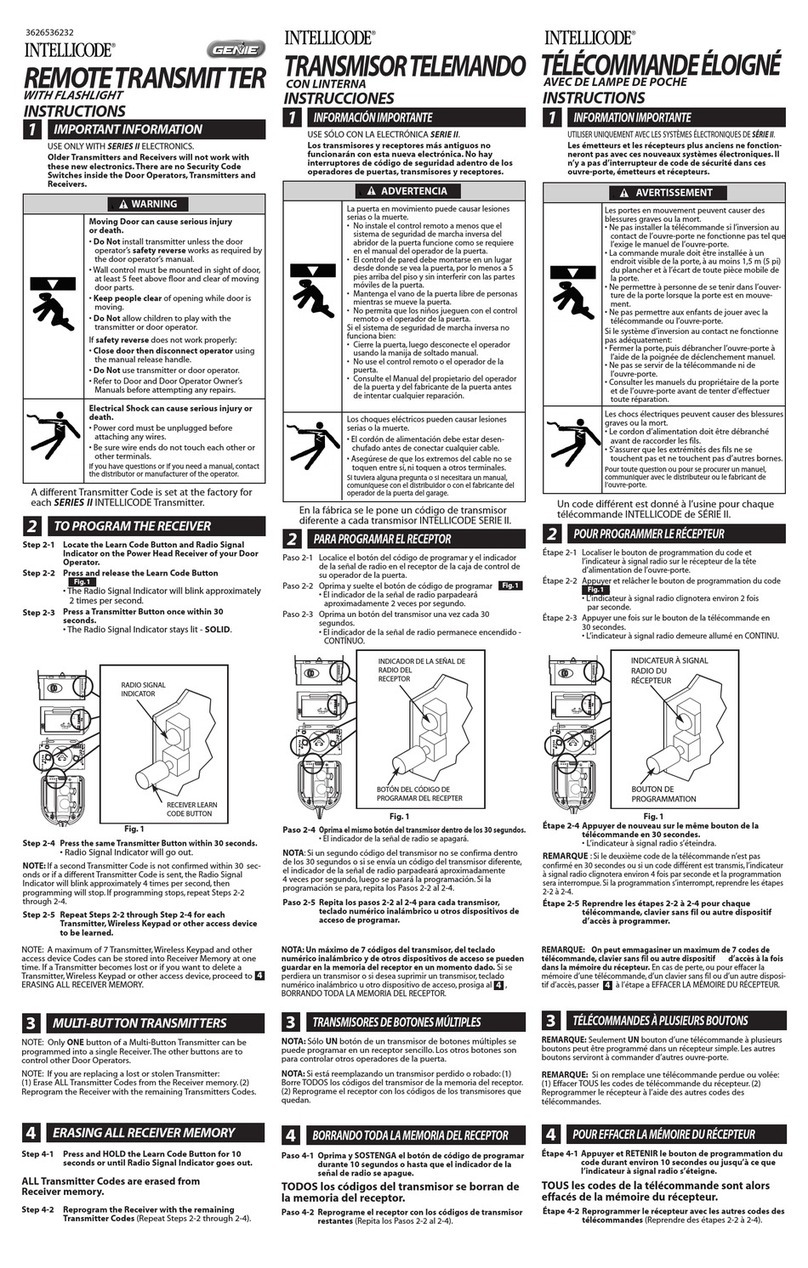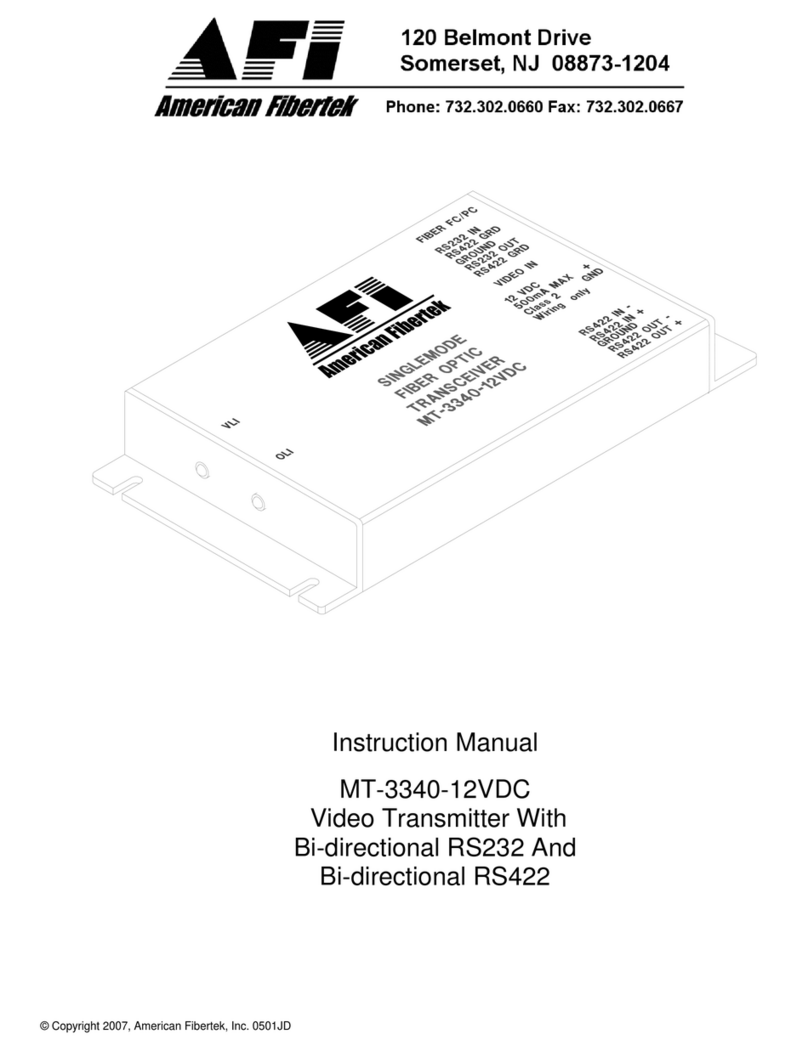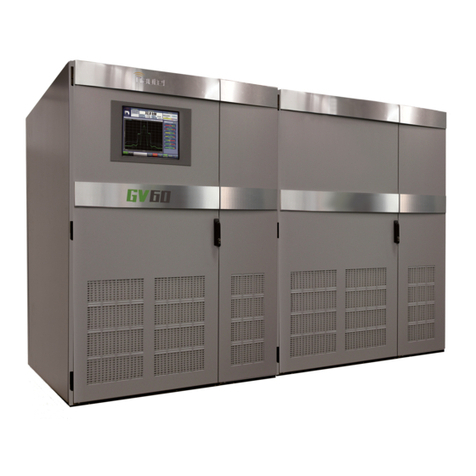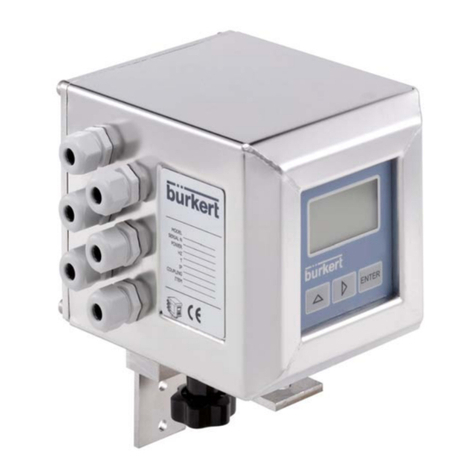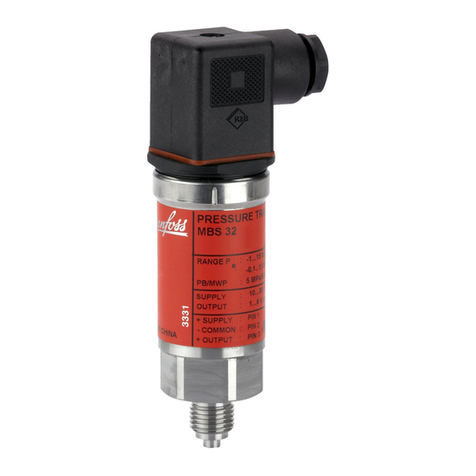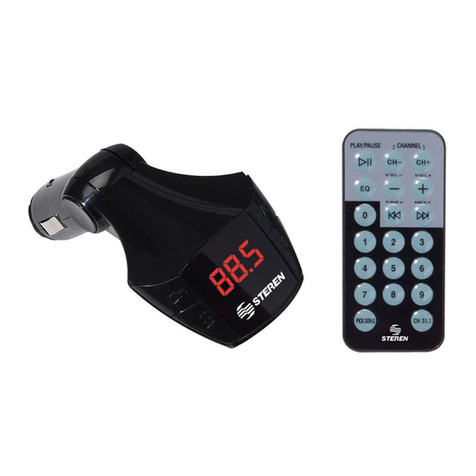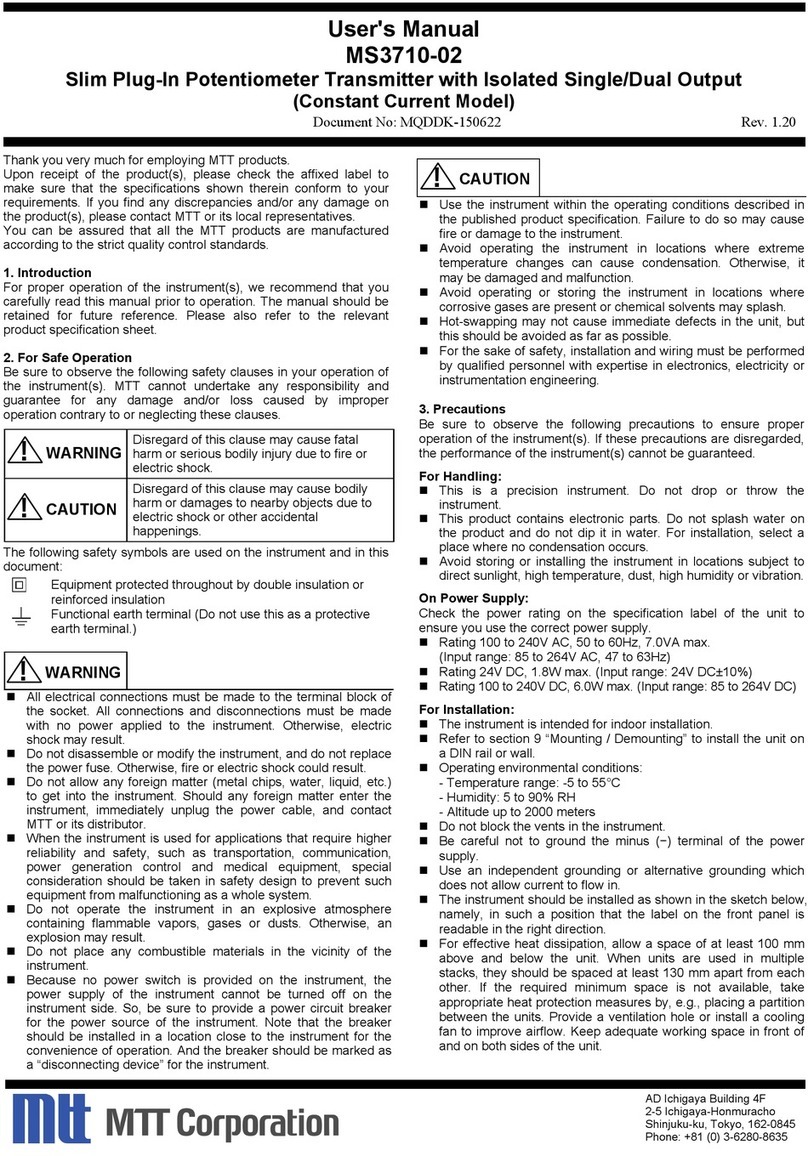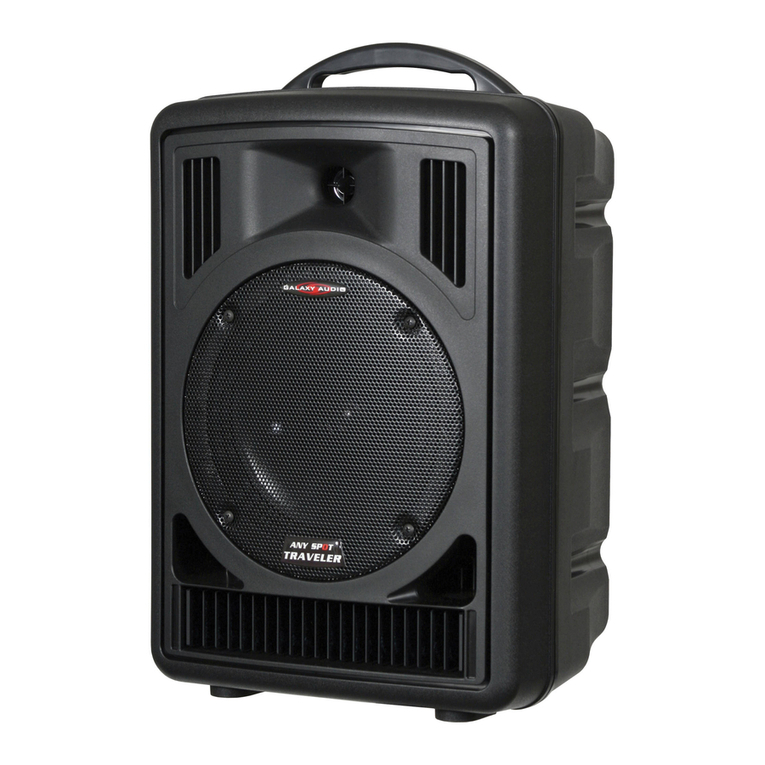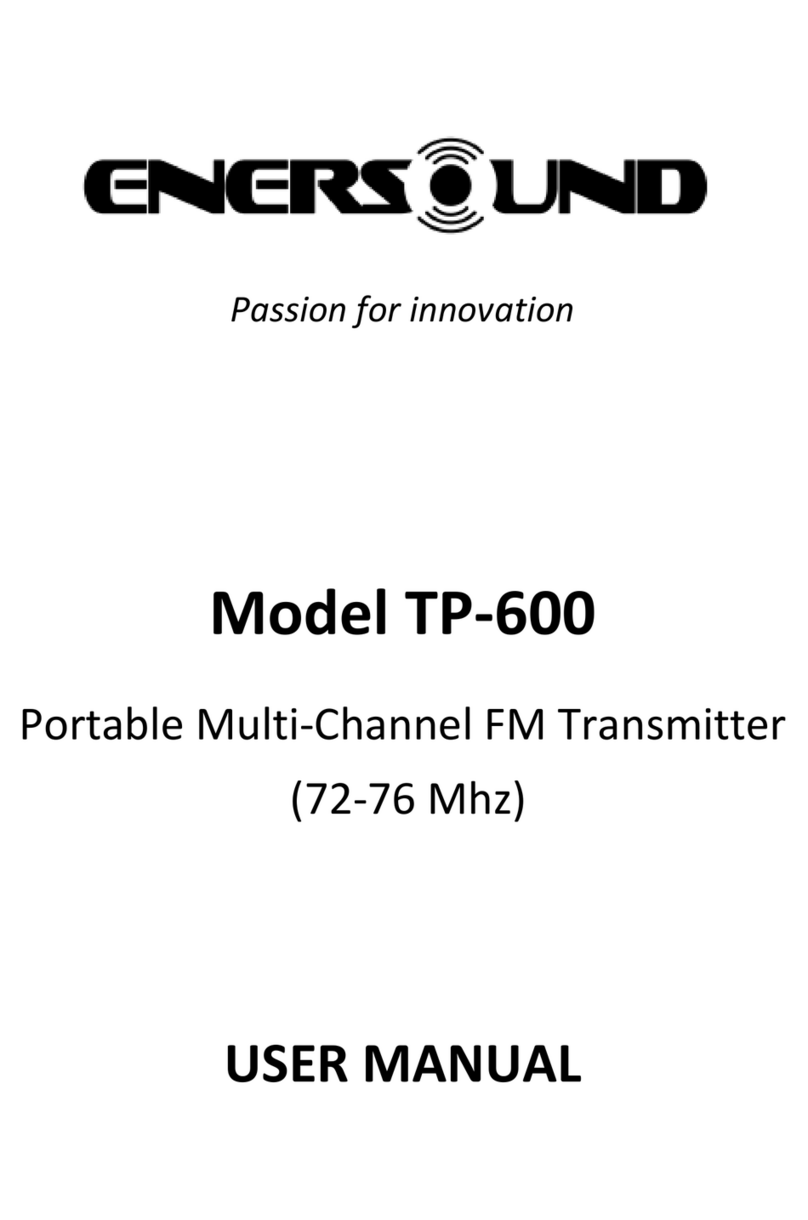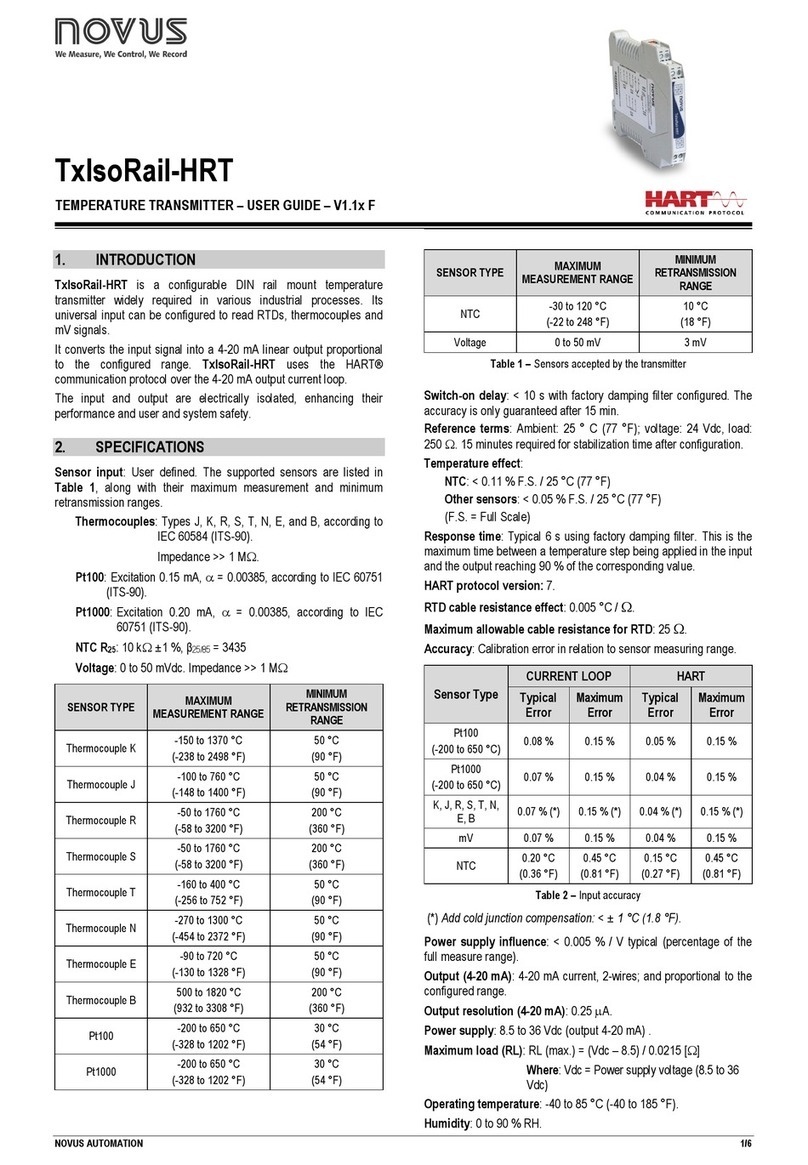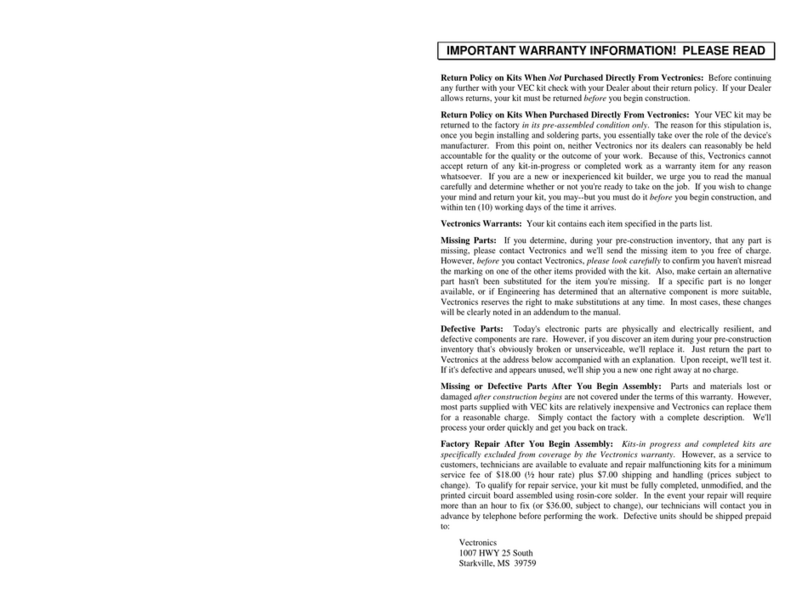SMAR TT481W Manual



Introduction
III
NOTE
This manual is compatible with version 1.XX, where 1 denote software version and XX software
release. The indication 1.XX means that this manual is compatible with any release of software
version 1.
Waiver of responsibility
The contents of this manual abides by the hardware and software used on the current equipment
version. Eventually there may occur divergencies between this manual and the equipment. The
information from this document are periodically reviewed and the necessary or identified corrections
will be included in the following editions. Suggestions for their improvement are welcome.
Warning
For more objectivity and clarity, this manual does not contain all the detailed information on the
product and, in addition, it does not cover every possible mounting, operation or maintenance
cases.
Before installing and utilizing the equipment, check if the model of the acquired equipment complies
with the technical requirements for the application. This checking is the user’s responsibility.
If the user needs more information, or on the event of specific problems not specified or treated in
this manual, the information should be sought from Smar. Furthermore, the user recognizes that the
contents of this manual by no means modify past or present agreements, confirmation or judicial
relationship, in whole or in part.
All of Smar’s obligation result from the purchasing agreement signed between the parties, which
includes the complete and sole valid warranty term. Contractual clauses related to the warranty are
not limited nor extended by virtue of the technical information contained in this manual.
Only qualified personnel are allowed to participate in the activities of mounting, electrical connection,
startup and maintenance of the equipment. Qualified personnel are understood to be the persons
familiar with the mounting, electrical connection, startup and operation of the equipment or other
similar apparatus that are technically fit for their work. Smar provides specific training to instruct and
qualify such professionals. However, each country must comply with the local safety procedures,
legal provisions and regulations for the mounting and operation of electrical installations, as well as
with the laws and regulations on classified areas, such as intrinsic safety, explosion proof, increased
safety and instrumented safety systems, among others.
The user is responsible for the incorrect or inadequate handling of equipments run with pneumatic
or hydraulic pressure or, still, subject to corrosive, aggressive or combustible products, since their
utilization may cause severe bodily harm and/or material damages.
The field equipment referred to in this manual, when acquired for classified or hazardous areas, has
its certification void when having its parts replaced or interchanged without functional and approval
tests by Smar or any of Smar authorized dealers, which are the competent companies for certifying
that the equipment in its entirety meets the applicable standards and regulations. The same is true
when converting the equipment of a communication protocol to another. In this case, it is necessary
sending the equipment to Smar or any of its authorized dealer. Moreover, the certificates are
different and the user is responsible for their correct use.
Always respect the instructions provided in the Manual. Smar is not responsible for any losses
and/or damages resulting from the inadequate use of its equipments. It is the user’s responsibility to
know and apply the safety practices in his country.

TT481 WirelessHARTTM –Operation & Maintenance, Instruction Manual
IV

Table of Contents
V
TABLE OF CONTENTS
INTRODUCTION .............................................................................................................................................VII
INSTALLATION FLOWCHART.....................................................................................................................XIII
SECTION 1 - INSTALLATION....................................................................................................................... 1.1
GENERAL....................................................................................................................................................................1.1
MOUNTING.................................................................................................................................................................1.1
BATTERY MODULE WIRING.....................................................................................................................................1.4
INSTALLATION IN HAZARDOUS LOCATIONS.........................................................................................................1.6
INTRINSICALLY SAFE................................................................................................................................................1.6
SECTION 2 - OPERATION............................................................................................................................ 2.1
FUNCTIONAL DESCRIPTION-HARDWARE..............................................................................................................2.1
TEMPERATURE SENSOR .........................................................................................................................................2.2
THERMOCOUPLES...................................................................................................................................................................2.2
THERMORESISTANCES (RTDS)..............................................................................................................................................2.3
CURRENTS (4 TO 20MA)..........................................................................................................................................................2.4
THE DISPLAY .............................................................................................................................................................2.4
WRITTING PROTECTION..........................................................................................................................................2.5
SECTION 3 - MAINTENANCE....................................................................................................................... 3.1
GENERAL....................................................................................................................................................................3.1
DIAGNOSTICS WITH THE DISPLAY.........................................................................................................................3.1
PROBLEMAS E SOLUÇÕES......................................................................................................................................3.1
DISASSEMBLY PROCEDURE ...................................................................................................................................3.1
REASSEMBLY PROCEDURE ....................................................................................................................................3.3
RETURNING MATERIALS..........................................................................................................................................3.4
SECTION 4 - TECHNICAL CHARACTERISTICS......................................................................................... 4.1
ORDERING CODE......................................................................................................................................................4.4
APPENDIX A - SRF –SERVICE REQUEST FORM FOR TEMPERATURE TRANSMITTER.....................A.1
APPENDIX B –BATTERY SAFETY DATASHEET......................................................................................B.1

TT481 WirelessHARTTM –Operation & Maintenance, Instruction Manual
VI

Installation Flowchart
VII
INTRODUCTION
WirelessHART technology overview
The WirelessHART technology is based on a wireless mesh network communication protocol used in
process automation applications. It adds wireless capabilities to the HART protocol, while maintaining
compatibility with existing HART devices, commands and already known and used tools.
WirelessHART network
Basically, a WirelessHART network, defined in the HART specifications, consists of a host, a
WirelessHART Gateway and one or more field devices and/or WirelessHART adapters. Together they
compose a mesh network where the host and devices can communicate.
Host
The host, usually connected to the control network, is a workstation in which, e.g., can be installed an
Human Machine Interface application, which allows an operator to interact with the process. Through
the WirelessHART Gateway, the host can gather data from devices connected to the WirelessHART
network. The host communicates with the WirelessHARTGatewayusingacommunicationprotocol,for
example, HSE, H1, Profibus or Modbus.
WirelessHART Gateway
It is a "translator" equipment. Thus it converts data from the host to the WirelessHART protocol, used
by the devices connected to the WirelessHART network, and converts data from the devices to the
host. In general, the WirelessHART Gateway incorporates the features of Network Manager and
Access Point. Roughly, the access point can be understood as the WirelessHARTradioinstalledatthe
gateway to communicate with devices connected to the wireless network.

TT481 WirelessHARTTM –Operation & Maintenance, Instruction Manual
VIII
Network Manager
The Network Manager is an application that can be embedded in the WirelessHART Gateway. On a
WirelessHART network is only allowed to have one Network Manager. Among its responsibilities, the
Network Manager distributes network identity (advertisement) publishing its existence, manages and
authenticates the addition (joining) of devices to the network. It also distributes individual securitykeys
(static or rotating) to the devices to ensure secure communication between it and the devices. The
Network Manager assigns communication band to the devices already connected to the network that
requested services to it, as well as manages the routes between the devices on the mesh network.
Specifically about the joining process of a WirelessHART device to the network, the Network Manager
validates the Network ID and the Join Key attributes which are configured in the WirelessHART
Gateway and WirelessHART devices.
The Network ID identifies a WirelessHART network in unique way. It is an unsigned integer attribute
and must be configured on the WirelessHART Gateway and all WirelessHART devices. Considering a
WirelessHART network installed in a plant, the permitted values for the Network ID ranges from 0 (hex
0x0000) to 32767 (0x7FFF hexadecimal).
The Join Key is a security key used to encrypt joining requests from WirelessHART devices that
receive the advertisement with the Network Id identical to theirs. It may be single or each
WirelessHART device may be configured with an individual Join Key. In the first case, the
WirelessHART Gateway and all WirelessHART devices must be configured with the same JoinKey.In
the second case, which provides higher communication security level, (a) must be configured in the
WirelessHART Gateway a list with individual Join Keys, i.e., a key for each WirelessHART device, and
(b) you must configure each WirelessHART device with its individual Join Key. The Join Key is a
hexadecimal string of 16 bytes. There is no restriction to the hexadecimal value of each byte. Thetable
below shows examples of some join keys.
JOIN KEYS
16-BYTES HEXADECIMAL STRING
00000000000000000000000000000000
0x00, 0x00, 0x00, 0x00, 0x00, 0x00, 0x00, 0x00,
0x00, 0x00, 0x00, 0x00, 0x00, 0x00, 0x00, 0x00
00000000000000000000000000000302
0x00, 0x00, 0x00, 0x00, 0x00, 0x00, 0x00, 0x00,
0x00, 0x00, 0x00, 0x00, 0x00, 0x00, 0x03, 0x02
00000000FFFFFFFF0000000000000000
0x00, 0x00, 0x00, 0x00, 0xFF, 0xFF, 0xFF, 0xFF,
0x00, 0x00, 0x00, 0x00, 0x00, 0x00, 0x00, 0x00
550000000000000000000000000000AA
0x55, 0x00, 0x00, 0x00, 0x00, 0x00, 0x00, 0x00,
0x00, 0x00, 0x00, 0x00, 0x00, 0x00, 0x00, 0xAA
WirelessHART device
The WirelessHART field device is the device that connects to the process, being able to receiveand/or
transmit data on the WirelessHART network. It is a WirelessHART router (repeater) by nature, i.e., it is
able to retransmit messages to/from other devices on the WirelessHART network.
WirelessHART Adapter
It is a bridge-type device, because it is able to provide data of HART + 4 to 20mA field device, legacy,
to the host via WirelessHART. The adapter uses HART FSK standardcommunication,wired,to access
data from HART field devices. And the adapter also uses the WirelessHARTcommunicationtoprovide
data of the field device to the host. The adapter thus enables a HART field device to work on
WirelessHART network.
We recommend a visit to the HART Communication Foundation website for additional information
about the WirelessHART protocol such as WirelessHART project planning, positioning of devices,
commissioning and verification tools, and practices.

TT400 WirelessHARTTM - Manual de Instrução, Operação e Manutenção
IX
Planning an WirelessHART network
The planning of a WirelessHART network is a task that is very similar to the activities that currently we
perform with conventional wired devices. Furthermore, due to the simplicity of a mesh WirelessHART
network, is exempt, in general, detailed field surveys, which areusuallyneededwhenweplannetworks
based on other wireless technologies.
Basically, a WirelessHART network involves planning, design, installation and commissioningphases.
Planning
This phase requires the execution of the steps below:
Scope definition
Clearly define the scope of the network. Answer the question: why do we need the wireless network?
To monitor process variables or to implement a non-critical control? The answer to this question will
facilitate the understanding between the team members responsibleforthenetworkand determine one
or more process units in the plant. For each process unit, allocate a gateway with unique and specific
Network ID. Outline the main field devices.
Identify potential sources of interference
Are there radio communications or other wireless networks in the plant? What protocols and
frequencies do they use? Use high power? Although unlikely, given the robustness of the radios used
by the WirelessHART technology, prior knowledge of the answers to these questions may identify
potential sources of interference and to indicate the taking of preventive and/or limiting actions even
before installation. For example, you can select a frequency channel as unavailable, adding it to the
black list of frequencies that is under the WirelessHART Network Manager control.
Integration with the host
The gateway connects the WirelessHART field devices to the host system.Planwhatdevicesand what
data are needed. Also, the stations or applications which will process the data have to be clearly
defined. From this set, among the protocols in the system, define which one will be used for integration
with the host and with the existing tools for configuring the devices. After defining the protocol for
integration, the user has to choose the gateway on the market that best meets your requirements.
Project
In the project phase, it is recommended the adoption of the practices below. Although conservative,
these practices ensure robustness and scalability to the network.
oDefine the Network ID that will be used for all devices in the process unit;
oDefine if the Join Key will be common to all devices or individual and dedicated ;
oDefine the policy to be used for the definition of devices (Long) Tags;
oUse a scale drawing of the process unit;
oPlace the gateway in a strategic position in the process unit ;
oPlan networks with at least five devices;
oInstall at least five devices within the gateway coverage area;
oEnsure that 25 % of the devices are within the gateway coverage area;

TT481 WirelessHARTTM –Operation & Maintenance, Instruction Manual
X
oReposition the gateway as needed ;
oCheck the coverage area of each device;
oEnsure that each device has three neighbors within its coverage area;
oPlace the repeaters as needed.
Installation
As mentioned before, WirelessHART devices should be connected to the process and configured the
same way as conventional wired HART devices.
Handheld terminals can be used normally. Just be sure of having it properly uploaded with the latest
DD files of the devices. However, it is known that the WirelessHART devices have characteristics
inherent to the technology. Because of this, it is recommended the adoption of practices mentioned
below for positioning the gateway and devices.
oInstall the gateway and the devices so that their antennas are vertical;
oEnsure that the antennas are at 0.5 m minimum distance of large obstacles or surfaces ;
oEnsure that the antennas of gateway and repeaters are 2 m above most obstacles within their
coverage areas;

TT400 WirelessHARTTM - Manual de Instrução, Operação e Manutenção
XI
oIf there are high devices, does not exceed 45 ° viewing angles between them;
oMake sure that the gateway is integrated to the host system as planned.
Commissioning
Commissioning consists of testing the device and verifying its configuration data. The TT481
WirelessHARTTMcan be commissioned both before and afterinstallation. Thedevicecommissioncan
be performed through some configurator that interprets DD,for example,the DEVCOMDROIDsoftware
(Android DDL interpreter), which can be used in conjunction with the HI331 (Bluetooth interface) to
configure the Hart equipment.

TT481 WirelessHARTTM –Operation & Maintenance, Instruction Manual
XII
To turn the transmitter on / off, use the SW1 (ON / OFF) terminal, as shown in Figure 1.4.
To connect the handheld configurator to the equipment, use the communication terminals "CN1 and
CN2" on the terminal block. See Figure 1.4.
WirelessHART devices commissioning
a. Install and power on the gateway.
B. If not specified by the customer at the time of ordering, the Network ID and Join Key values for the
gateway and devices should be according the factory default value. Note: It is strongly recommended
that both be changed! To change these parameters install the gateway and all the devices on the
network following the steps below. Once the network is fully functional it will be more practical to
change them.
c. The device configuration must be carried out individually, starting with those closest to the gateway
and moving away to the most distant so that the communication is being established correctly.
d. Always install the equipment with the antenna in the vertical direction. If the device is installed
horizontally, consult Smar to purchase the antenna for horizontal assemblies, in order to be 90 ° with
the equipment. No WirelessHART device should be located at the highest point of theplant,preventing
it from lightning;
e. Turn on the device using the key on the left of the display and wait until it connects to the network
(this time can vary from 2 minutes to up to 20 minutes, depending on the size of the network). The
status of the device on the network can be checked via the display (section - Status indication on the
display), maintenance port or gateway.
ATTENTION
If the device was not purchased together with the gateway, that is, if the gatewayalreadyhas Network
ID and Join Key values different from the factory values, it is necessary to configuretheseparameters
on the device so that it connects correctly to the network : first configure Network ID and then Join
Key, resetting the device after the settings.
f. As soon as these steps are performed for all devices in the network and theyareconnectedcorrectly,
itis time to change the values of Network ID and Join Key following the instructions according previous
(e) step (if they have not already been changed). Network ID is any number between 0 and 32767 and
identifies the network among others. Join Key is a key of 32 hexadecimal characters (0-9 or A-F) and
enable the device to the configured network.
g. Configure the LongTAG parameter that identifies the equipment on the network.
H. Check that the engineering units of the equipment are in accordance with those required by the
process.
i. Configure Burst mode parameters to publish desired measurements and status:
• Burst message: up to 3 messages can be configured with different commands and times;
• Minimum Time: is the time for publication of the variables;
• Maximum Time: must be longer than the minimum time and is only used in trigger mode (check the
operation of the trigger mode in the device manual;
• Command: HART command which sends the variables desired by the user (for example,command3
sends the values of PV, SV, TV and QV, when available);
• Burst mode: once all the above parameters have been configured, activate Burst mode.
• Acquisition based on Burst time: parameter that reduces equipment consumption by making only one
acquisition immediately before the Burst transmission. If this parameter is disabled, the equipment will
make an acquisition every two seconds, regardless of the Minimum Burst Time.
j. After some negotiation time with the gateway, the device will begin to publish the configured
command at a minimum configured time rate. The ACK icon is shown on the display (if available)when
the device enters Burst mode and the F (t) icon flashes when the Burst command is sent (see section -
Status indication on the display).

TT400 WirelessHARTTM - Manual de Instrução, Operação e Manutenção
XIII
ATTENTION
The Burst mode settings will remain even after the device is turned off. After turned on, the device will
automatically connect to the network in Burst mode with the sameconfiguredtimeand command.The
higher the refresh rate, the shorter the battery life and vice versa. Set a refresh rate which allows the
device keep running for a few years.
k. After the general configuration of the network, wait a period of about 1 hour for the network to start
operating in a 100% optimized way. Attention: There is a parameter for estimating battery life that
indicates the expected life, in days, of the equipment. This parameter is recalculated every 60 minutes
and its value should only become valid after two or three hours of operation of the device on the
network (time needed to optimize consumption). When this value is close to the end, the user will
receive an alarm on the device status and on the display (when available). When replacing the Battery
Module (Smar code 400-1273), the replacement must beconfiguredusing aconfiguratorthatwill cause
the equipment to reset the estimated lifetime count for the new module. (Search for “Battery Life
Remaining”).
ATTENTION: do not dispose the Battery Module in ordinary waste. Use asuitabledisposal forbatteries
or chemical waste.
Checking Equipment Range
Identify what distance may be considered according the kind of environment where the device is
installed:
• Strong obstruction - about 30 meters. Very dense environments in relation to the device, pipes,
cables, etc. A place where you would normally are not able to walk.
• Medium obstruction - about 75 meters. Environments where devices are located in a good distance
from others equipaments in the factory floor.
• Light obstruction -150 meters. Consider an open environment that hassomekindof obstructionlikea
silo or a tank. There is plenty of free space around for RF waves to propagate.
• No obstruction - up to 225 meters. Consider that the antenna of the device "sees"directlytheantenna
of other devices or gateway in the network, without any obstacle between them. In addition, the
difference in height between them should not cause an angle greater than 5 degrees.
Conditions that significantly reduce the range of thedeviceincludemountingthe equipmentcloseto the
ground, below ground level or under water, as the RF signal is absorbed by the ground or water and
does not propagate. In addition, mounting the equipment outside the network area (gateway), for
example, considering a network in an open environment, installing the equipmentinsidea closedroom
also contributes to signal attenuation, after all the signal will not propagate very well under concrete,
wood, etc.
Gateway commissioning
Gateways can have a remote antenna connection, allowing them to be installed indoors and only the
antenna installed outdoor.
a. Make sure that the gateway is available to the host system;
b. Check the gateway and make sure that it has at least five (05) devices directly connected to it;
c. Check that 25% of the devices are connected directly to the gateway. If necessary, add repeaters;
d. The gateway connects the devices to the host system. Therefore, check that the device data is
reaching the applications that subscribe to it.

TT481 WirelessHARTTM –Operation & Maintenance, Instruction Manual
XIV
INSTALLATION FLOWCHART
Yes
Was the transmitter
configured on the bench
to match the application?
Configure the engineering unit
Simule the value(s)
of the work range in the sensor(s)
conection terminal(s)
mV or Ohm
Start
No
No OK
Yes
Configure the sensor type
Configure the sensor connection
Configure the measurement range
0% and 100%
Configure the alarm
See manual
(Section 5 - )Maintenance
Is the reading correct?
Check the area classification
and its practices
Install the transmitter preferably
on weather- protected areas
Power the transmitter properly.
Configure Network ID and Join Key
for HARTWireless
Install the transmitter according
with the application, verifying the
the most appropriate position
indicator and the antenna is
pointing upwards

Section 1
1.1
INSTALLATION
General
The overall accuracy of temperature and other measurements depends on severalvariables. Although
the transmitter has an outstanding performance, proper installation isessential, in order tomaximizeits
performance.
Among all factors, which may affect transmitter accuracy, environmental conditions are the most
difficult to control. There are, however, ways of reducing the effects of temperature, humidity and
vibration.
Temperature fluctuation effects can be minimized bylocating thetransmitterinareasprotectedfromex-
treme environmental changes.
In warm environments, the transmitter should be installed to avoid, as much as possible, direct expo-
sure to the sun. Installation close to lines and vessels subjected to high temperatures should also be
avoided. For temperature measurements, sensors with cooling-neck can be used or the sensor canbe
mounted separated from the transmitter housing.
Use of sunshades or heat shields to protect the transmitter from external heat sources should be
considered, if necessary.
Humidity is fatal to electronic circuits. In areas subjected to high relative humidity, the O’Rings for the
electronics cover must be correctly placed. Removal of the electronics cover in the field must be
reduced to the minimum necessary, since each time it is removed the circuits are exposed to the
humidity. The electronic circuit is protected by a humidity proof coating, but frequent exposures to
humidity may affect the protection provided. It is also important to keep the covers tightened in place.
Every time they are removed, the threads are exposed to corrosion, since these parts can not be
protected by painting. Code-approved sealing methods on conduit entering the transmitter should be
employed.
Measurement error can be decreased by connecting the sensor as close to the transmitter as possible
and using proper wires (see Section 2, Operation).
WARNING
Random, frequent or common cause failures must not damage the equipment´s work or result in
death or serious injure, must not harm to the environment or equipment, and must not loss
of equipment or production.
Electrical shock can result in serious injury.
Mounting
The transmitter may be mounted according to the Figure 1.1.
To access the electronic board, terminal block, battery and display module, open the cover of the
gear box by unscrewing the four front screws.

TT481 WirelessHARTTM –Operation & Maintenance, Instructions Manual
1.2
70
100
MOUNTING BRACKET FOR TUBE 2"
153
207
180
180
214
Figure 1.1 (a) –Dimensional Drawing - TT481 WirelessHARTTM with 4 Channels

Installation
1.3
70
100
153
180
207
234
180
214
MOUNTING BRACKET FOR TUBE 2"
Figure 1.1 (b) –Dimensional Drawing - TT481 WirelessHARTTM with 8 Channels
WARNING
The TT481 WirelessHARTTM should always be installed with the antenna positioned upward.

TT481 WirelessHARTTM –Operation & Maintenance, Instructions Manual
1.4
Minimum
0.5 m
Minimum
1.5 m
Legend:
1 - Vertical Obstacle
2 - Floor
3 - Minimum of three neighboring equipment
4 - Advised five neighboring transmitters
Figure 1.2 –Wiring Diagram for Wireless Transmitters
Battery Module Wiring
The device go out of factory with battery module off, for safety and standard shipping. To turn it is
necessary to previously connect the Battery Module connector to circuit board and flip the switch SW1
to the ON position (Figure 1.3).

Installation
1.5
Figure 1.3 –Connecting the Battery Module to Electronic Board
The maintenance port allows initial configuration of the transmitter. To do this, it must connect a HART
configurator in communication terminals "CN7" and "CN8", shown in Figure 1.4..
Figure 1.4 –Maintenance Port

TT481 WirelessHARTTM –Operation & Maintenance, Instructions Manual
1.6
The sensor connection on the input plate of the equipment shall be performed according to Figure 1.5,
considering the type and number of sensors to be connected.
Figure 1.5 –Sensors Wiring
Installation in Hazardous Locations
WARNING
Explosions could result in death or serious injury, besides financial damage. Installation of this
transmitter in explosive areas must be carried out in accordance with the local standards and the
protection type adopted. Before continuing the installation make sure the certificate parameters are
in accordance with the classified area where the equipment will be installed.
The instrument modification or parts replacement supplied by other than authorized representativeof
Smar is prohibited and will void the certification.
The transmitters are marked with options of the protection type. The certification is valid onlywhenthe
protection type is indicated by the user. Once a particular type of protectionis selected,anyothertype
of protection can not be used.
Intrinsically Safe
WARNING
In hazardous zones with intrinsically safe or non-incendive requirements, the circuit entity
parameters and applicable installation procedures must be observed.
For free access to the HART bus in the explosive environment, ensure the instruments in the
loop are installed in accordance with intrinsicallysafe or non-incendive field wiring practices.
It is not recommended to remove the transmitter cover when the power is ON.
Table of contents
Other SMAR Transmitter manuals
